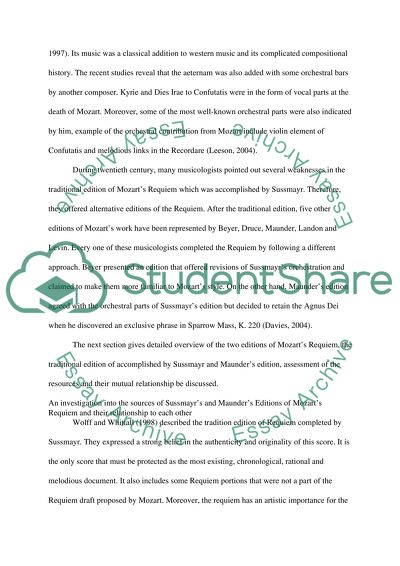Cite this document
(“Sussmayrs and Maunders Editions of Mozarts Requiem Essay”, n.d.)
Retrieved de https://studentshare.org/music/1391280-sussmayrs-and-maunders-editions-of-mozarts-requiem
Retrieved de https://studentshare.org/music/1391280-sussmayrs-and-maunders-editions-of-mozarts-requiem
(Sussmayrs and Maunders Editions of Mozarts Requiem Essay)
https://studentshare.org/music/1391280-sussmayrs-and-maunders-editions-of-mozarts-requiem.
https://studentshare.org/music/1391280-sussmayrs-and-maunders-editions-of-mozarts-requiem.
“Sussmayrs and Maunders Editions of Mozarts Requiem Essay”, n.d. https://studentshare.org/music/1391280-sussmayrs-and-maunders-editions-of-mozarts-requiem.


